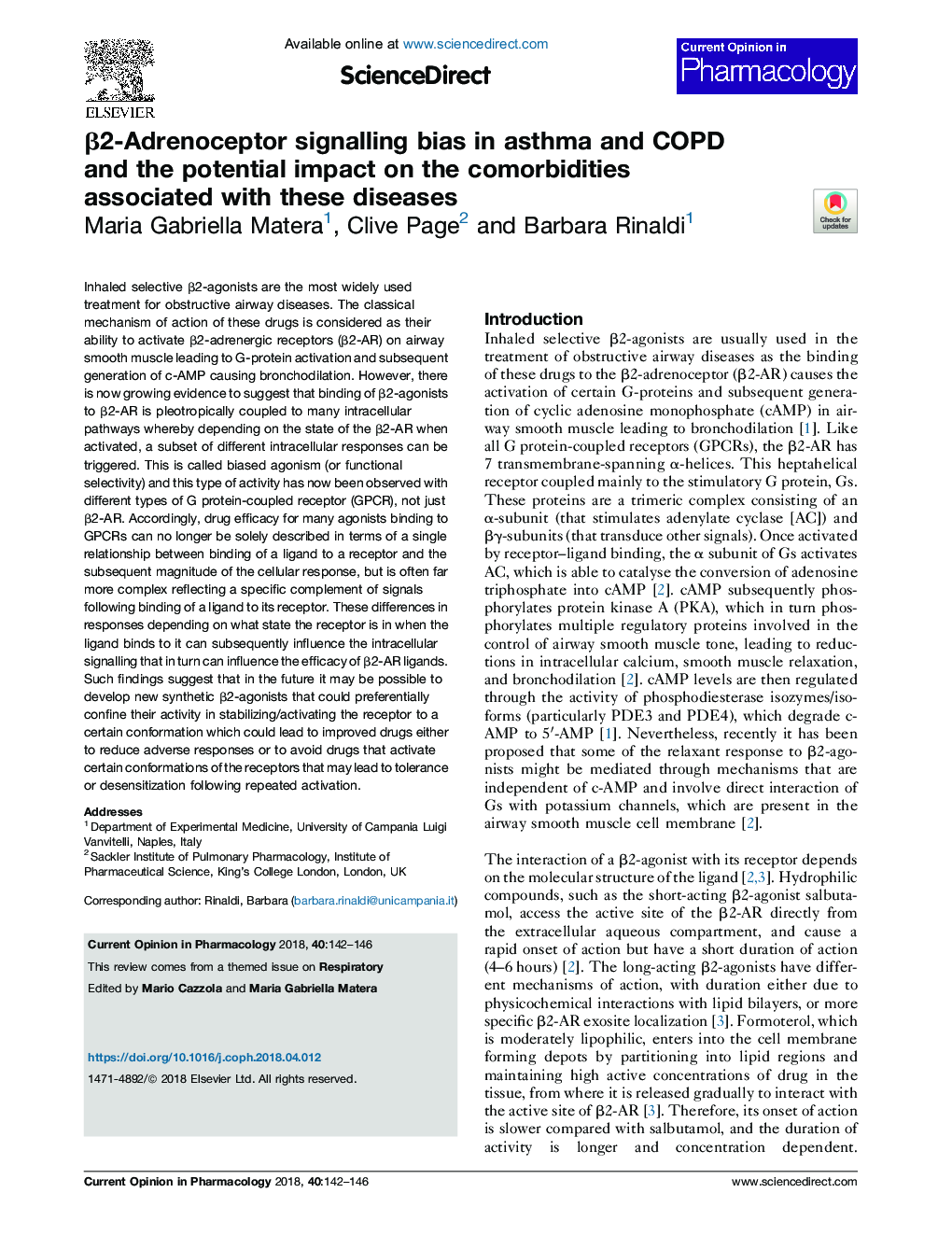| Article ID | Journal | Published Year | Pages | File Type |
|---|---|---|---|---|
| 8528617 | Current Opinion in Pharmacology | 2018 | 5 Pages |
Abstract
Inhaled selective β2-agonists are the most widely used treatment for obstructive airway diseases. The classical mechanism of action of these drugs is considered as their ability to activate β2-adrenergic receptors (β2-AR) on airway smooth muscle leading to G-protein activation and subsequent generation of c-AMP causing bronchodilation. However, there is now growing evidence to suggest that binding of β2-agonists to β2-AR is pleotropically coupled to many intracellular pathways whereby depending on the state of the β2-AR when activated, a subset of different intracellular responses can be triggered. This is called biased agonism (or functional selectivity) and this type of activity has now been observed with different types of G protein-coupled receptor (GPCR), not just β2-AR. Accordingly, drug efficacy for many agonists binding to GPCRs can no longer be solely described in terms of a single relationship between binding of a ligand to a receptor and the subsequent magnitude of the cellular response, but is often far more complex reflecting a specific complement of signals following binding of a ligand to its receptor. These differences in responses depending on what state the receptor is in when the ligand binds to it can subsequently influence the intracellular signalling that in turn can influence the efficacy of β2-AR ligands. Such findings suggest that in the future it may be possible to develop new synthetic β2-agonists that could preferentially confine their activity in stabilizing/activating the receptor to a certain conformation which could lead to improved drugs either to reduce adverse responses or to avoid drugs that activate certain conformations of the receptors that may lead to tolerance or desensitization following repeated activation.
Related Topics
Life Sciences
Neuroscience
Cellular and Molecular Neuroscience
Authors
Maria Gabriella Matera, Clive Page, Barbara Rinaldi,
